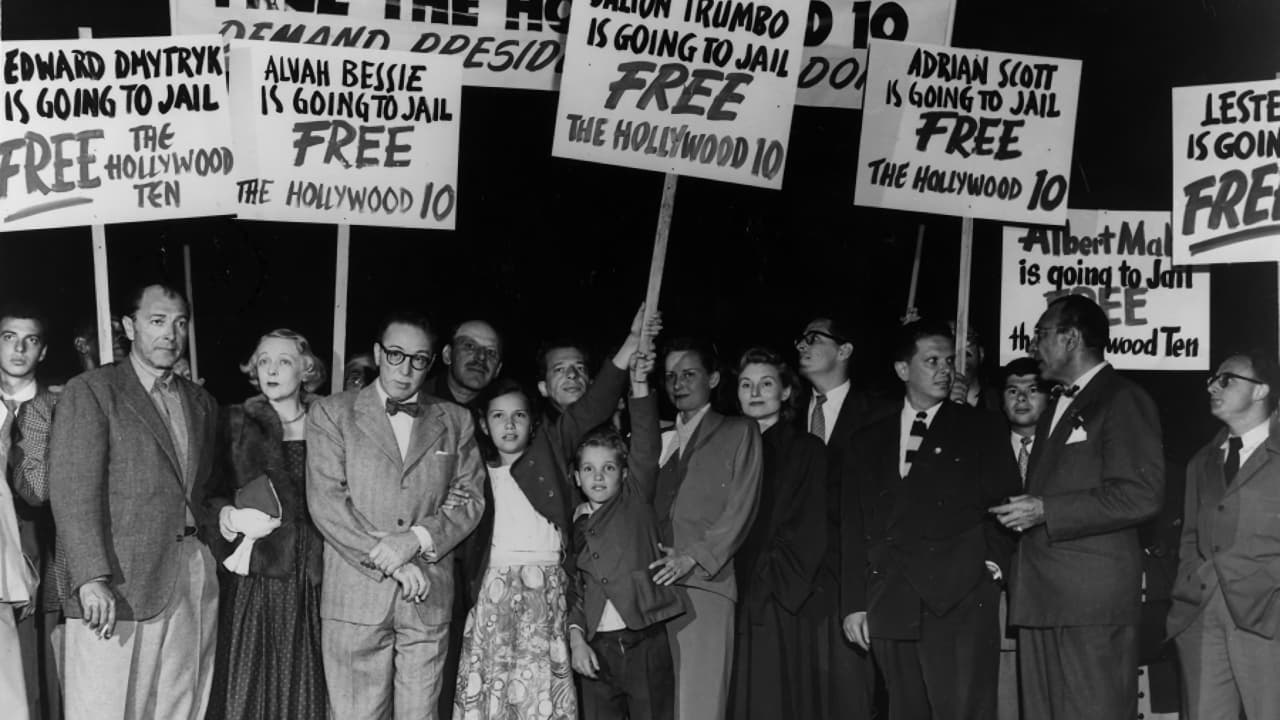
Blake Jones recently became involved with the rescue and restoration of an archive of 16mm footage to be used in a timely upcoming documentary about McCarthy-era Hollywood. In the first of a two-part series, he details the efforts made to save the decaying film.
[Read Part Two of this story here.]
The footage was shot during a reunion of actors, directors and writers who were blacklisted in Hollywood starting in the 1950s. Many of these people were forced to testify in Washington about their involvement and in several cases asked to name others who may have been involved with the American Communist party. Those who refused to comply were blacklisted in the motion picture industry and in some cases their passports were even revoked. There were also those who were found to be in contempt of congress and sent to prison.
The ten individuals who were sent to prison would be known as the Hollywood Ten. This was a dark time for Hollywood as many of Hollywood’s best found the studio’s doors slammed in their face and in many cases forced to leave the country or even pursue other means in order to work.
The reunion dinner was organized in 1981 and held at the famous Ennis House located in the Las Feliz area of Los Angeles, California. The house was designed by architect Frank Lloyd Wright in 1923 for Charles and Mabel Ennis. This sprawling estate has been seen in such films as The House on Haunted Hill and The Matrix. Many of those who attended the reunion dinner had not seen each other for almost thirty years.
Shot in 16mm
The reunion dinner and surrounding interviews were shot with multiple camera crews in 16mm with sync sound. In the years following the event, many film laboratories have closed down. I wanted to work with the original negative but found that the material was lost since it was unclaimed when the film lab closed its doors so it was subsequently discarded. In the end all that existed was the work print, magnetic track and the original audio tapes recorded during the shoot.
Upon arriving in Los Angeles, I had the culture shock of being back in Los Angeles for the first time in fifteen years. Originally born in Burbank, I was shocked that many of the areas I knew from when I was growing up were virtually unrecognisable. Upon finding the archive, I found myself scrounging through a closet full of film boxes that had an overpowering smell of vinegar. This odour was caused as the film was starting to decompose in a process known as Vinegar Syndrome and is actually acidic acid gas being emitted by the film due to a chemical reaction. The unfortunate result of this is extreme physical warpage of the film and, in later stages, the emulsion starts to flake from the acetate backing. I also found some of the archive had been damaged by moisture because of the location where it was stored.

Finding the archive footage
Once I retrieved all the film rolls and audio tracks, I transported everything to a cutting room in Burbank using a caravan of Uber cars. My mission was to then manually go through each roll and prepare them for scanning. The original audio tapes recorded during the shoot were in perfect condition so I decided to use these as my audio source instead of the full coat 16mm magnetic sound tracks. I found the smell in the room to be overpowering due to being surrounded by decomposing film. Because of this I was forced to work with all the doors to the cutting room open.

The film rolls in the cutting room
Film triage
My next task was to start inspecting the film. I had to first create two stacks, one with film rolls that had decomposed past the point of no return and another with film rolls that could be restored. The next step was the laborious task of manually winding through each film roll. I had to inspect each splice and in cases replace the painted white film leader as the moisture damage had caused the paint to fall off and get stuck onto the film. I then had to use film cleaner to wipe off any grease pencil marks that were applied. In many cases I had to repair broken perforations and splices.

Film condition
In the end I was able to save a large amount of the archive which if left untouched would certainly have succumbed to decomposition over the course of time. Instead of using these new style rewind benches available today, I opted for the old fashioned hand rewinds. I used this process as I could easily run my fingers along the edge of the film and detect any splices or damage while still having full control of the film.
I then went through the boxes where I had deemed the footage to be too decomposed to scan. Some of these interviews were important to use so I decided to rescue what I could so it could be included into the final film. Sadly in a few cases there was literally no image left on the film as some rolls showed that the emulsion on the center of the frame was literally flaked off. What I also found to be interesting was that the distortion of the film caused by the Vinegar Syndrome warped and stretched the film to such a degree that it no longer fit into a film splicer.

Film decomposition
As there was an attempt to edit this material following the initial shoot, there were sections of the work print that had been cut. With this in mind I had to formulate some ideas about how to resync these scenes.
I found many interesting ways of restoring the image and sound to get the optimal results. And, in the next instalment, I will detail how I scanned, restored and synced the audio with the picture
tl;dr
- Blake Jones is engaged in the preservation of a 16mm film archive related to blacklisted Hollywood figures during the McCarthy era, aiming to feature this footage in an upcoming documentary.
- The footage captures a reunion dinner in 1981 of actors, directors, and writers affected by the blacklist, held at the architecturally significant Ennis House in Los Angeles.
- After retrieving the footage, Jones faced challenges with decomposition, specifically Vinegar Syndrome, which caused issues like warping and emulsion flaking; he had to sort and repair the film rolls manually.
- Despite the difficulties, he managed to save a significant portion of the archive, opting for traditional methods to ensure careful handling and inspection throughout the restoration process.
Tags: Post & VFX Restoration


Comments